Escanaba Trough: Exploring the Seafloor and Oceanic Footprints
May 26 - June 14, 2022
Exploration Team
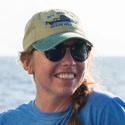
Amy Gartman
Principal Investigator; Research Oceanographer, U.S. Geological Survey Pacific Coastal and Marine Science Center
Amy Gartman is a research oceanographer and Global Marine Minerals project lead at the U.S. Geological Survey Pacific Coastal and Marine Science Center (PCMSC). She came to PCMSC in 2015 as a Mendenhall fellow. Prior to that she was a postdoctoral researcher at Harvard University’s Department of Organismic and Evolutionary Biology, where she studied interactions between microorganisms and metal sulfide minerals. She holds a B.S. in chemistry from New York University and a Ph.D. in oceanography from the University of Delaware. She studies redox geochemistry, including marine mineral formation and dissolution processes, and has conducted research on expeditions to the Atlantic, Pacific, and Arctic ocean basins.
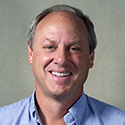
Robert Zierenberg
Co-Principal Investigator, Emeritus Professor of Geology, University of California - Davis
Robert Zierenberg’s first expedition to Escanaba Trough was in 1986, and he was on the human occupied vehicle Alvin dive in 1988 during which the first hydrothermal venting was observed in the area. At that time, he was a research scientist with the U.S. Geological Survey (USGS) Branch of Western Mineral Resources in Menlo Park, California. He was co-chief scientist on the Ocean Drilling Program Leg 169 which conducted scientific drilling at Escanaba Trough in 1996. That same year, he left the USGS and joined the faculty in the Department of Geology at the University of California – Davis. He has since retired from teaching, but continues his research efforts to understand rock-water interactions in hydrothermal systems, including those on mid-ocean ridge spreading centers, massive sulfide ore deposits, and geothermal systems in Iceland. He was a member of the scientific team of the Iceland Deep Drilling Program which succeeded in recovering drill cores from the roots of an active, supercritical black smoker system at a depth of 4.5 kilometers (2.8 miles) below the Reykjanes spreading center. He is excited to have the opportunity to return to Escanaba Trough and see how things may have changed in the nearly 35 years since he first witnessed hydrothermal venting, and the associated chemosynthetic fauna community, at this site.
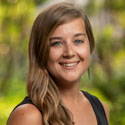
Katlin Bowman Adamczyk
Physical Scientist, Pacific Marine Lab, U.S. Geological Survey
Katlin Bowman Adamczyk is a physical scientist with the Pacific Marine Lab at the U.S. Geological Survey in Santa Cruz, California. She has a Ph.D. and B.S. in environmental sciences from Wright State University (Dayton, Ohio) and completed postdoctoral training at the University of California Santa Cruz where she also worked as a project scientist and lecturer. Katlin has a research background in marine biogeochemistry and uses analytical chemistry and genomics techniques to study the cycling of mercury in the ocean. Her work across the globe has helped scientists understand how mercury concentrations have changed throughout history and will be used to evaluate the Minamata Convention, a global treaty aimed at reducing mercury emissions. She has spent nearly a year of her life at sea, spanning 12 expeditions in the Atlantic, Pacific, and Arctic ocean basins and Mediterranean Sea, including ice floe sampling at the North Pole and seafloor exploration in human occupied vehicle, Alvin. She also studied the impacts of plastic pollution on marine environments as a 2018 and 2020 National Geographic Explorer.
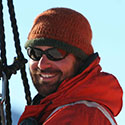
Pete Dal Ferro
Marine Facility, U.S. Geological Survey Pacific Coastal and Marine Science Center
Pete Dal Ferro is a member of the Marine Facility (MarFac) group that provides fabrication and science support for the U.S. Geological Survey (USGS) Pacific Coastal and Marine Science Center (PCMSC) in Santa Cruz, California. He is one of two captains that run Research Vessel (R/V) Parke Snavely and R/V San Lorenzo as well as the various small boats that support PCMSC as well as serving as the Center’s diving safety officer. Prior to the USGS, Pete worked for 11 years as the boating program manager/assistant diving safety officer at the University of California, Santa Cruz's Long Marine Lab and concurrently sailed 7 summer seasons on R/V Laurence M. Gould and R/V Nathaniel B. Palmer as a marine technician in support of National Science Foundation-funded science missions for the U.S. Antarctic Program.
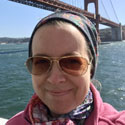
Amanda Demopoulos
Co-Principal Investigator, Research Benthic Ecologist, Wetland and Aquatic Research Center, U.S. Geological Survey
Dr. Amanda Demopoulos is a research benthic ecologist for the U.S. Geological Survey (USGS) at the Wetland and Aquatic Research Center in Gainesville, Florida. Her work examines the community structure and function of animals associated with the seafloor, including on top (epifauna) and within (infauna). She is also interested in understanding food-web connections and flow of energy within deep-sea habitats. After completing a post-doctoral fellowship at Scripps Institution of Oceanography, Amanda obtained her current position at USGS, where she conducts research on the community ecology of coastal wetlands and various deep-sea environments, including cold-water corals and chemosynthetic habitats. On this expedition, she will be sampling the benthos using cores deployed by remotely operated vehicle Jason to characterize benthic invertebrates found in the mud and their environment. She will also collect samples of dominant fauna found during the dives to process for species identification and food-web studies. Amanda received a B.S.in oceanography from the University of Washington (1996), and M.S. (2000) and Ph.D. (2004) degrees in biological oceanography from the University of Hawaii at Manoa.
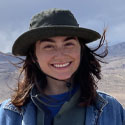
Jaycee Favela
Physical Scientist, Global Marine Mineral Resources, U.S. Geological Survey
Jaycee Favela is a physical scientist at the U.S. Geological Survey (USGS) working with the Global Marine Mineral Resources project. Prior to her current position, Jaycee worked as a student contractor for the USGS Coast Train project where she assisted in the labeling of billions of earth surface imagery pixels to train deep learning models for image segmentation. She graduated from the University of California, Santa Cruz in 2021 with a B.S. in Earth Sciences with a concentration in Geology.
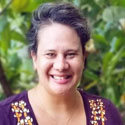
Kiana Frank
Co-Principal Investigator, Assistant Professor, Pacific Biosciences Research Center at the University of Hawaii, Mānoa
Kiana Frank is an assistant professor within the Pacific Biosciences Research Center at the University of Hawaii, Mānoa. Her research focuses on understanding the complex role that microorganisms play in biogeochemical cycling, with particular focus on describing the microbial community structure, functional capacity, and rates of metabolic activity in the context of the physico-chemical environment – from mountain ridge to mid-ocean ridge. The majority of her research is focused on environmentally tractable ecosystems in Hawai’i and the deep ocean. By studying and understanding environmental microbial communities, Kiana’s research can help us to better evaluate overall ecosystem health and inform current monitoring, restoration, cultivation, and management of resources to sustainably support our people and ʻāina (land). Her research integrates biology, geochemistry, and ʻike kupuna (traditional knowledge) to address novel hypothesis and showcase connections between contemporary science and indigenous science, perpetuating place-based knowledge and ecological-based studies to foster values and concepts of traditional management.
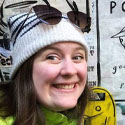
Colleen Hoffman
Postdoctoral Scholar, Cooperative Institute for Climate, Ocean and Ecosystem Studies, University of Washington
Dr. Colleen Hoffman is currently a Postdoctoral Scholar at the Cooperative Institute for Climate, Ocean and Ecosystem Studies at the University of Washington. Her scientific interests include investigating trace metal transformation and transport mechanisms in deep-sea marine environments and the role of organic and inorganic ligands in the cycling and stabilization of trace metals. For both her Ph.D. and postdoctoral work, she has investigated how trace metals are cycled and transported in neutrally buoyant hydrothermal plumes to better understand the local and global impact of hydrothermal venting on marine geochemical cycles. As a part of the science party for the Escanaba Trough: Exploring the Seafloor and Oceanic Footprints expedition, she along with her colleague, Laura Moore, will be focusing on identifying and characterizing metal-binding organic ligands within hydrothermal plumes along Escanaba Trough. This will build upon previous findings that metal-binding organic ligands play an important role in the cycling, transport, and utilization of trace metals from hydrothermal plumes. Outside of science, Colleen enjoys hiking, backpacking, and has recently gotten into mountain biking with her partner.
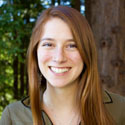
Hope Ianiri
Marine Biogeochemist, U.S. Geological Survey Pacific Coastal and Marine Science Center
Hope Ianiri is a marine biogeochemist working as a contractor at the U.S. Geological Survey (USGS) Pacific Coastal and Marine Science Center. Broadly, her research interests are focused on understanding the long-term marine organic carbon and nitrogen cycles. At Escanaba Trough, she is interested in characterizing the sedimentary organic matter associated with sulfide mineral deposits. Specifically, she aims to quantify how much organic carbon is stored in the sediments, evaluate what portion of this material is available as a food source to benthic communities, and understand interactions between specific marine minerals and sedimentary organic carbon. This work will be key to improving our understanding of this unique hydrothermal environment and predicting how it may be impacted by potential human disturbance. This project was funded by the Mendenhall Research Fellowship Program, and Hope will join USGS as postdoc summer of 2022. She has a Ph.D. in ocean sciences from the University of California, Santa Cruz and a B.S. in chemistry from Northeastern University. In her time outside of work, she is likely to be found outdoors biking, hiking, or snowboarding.
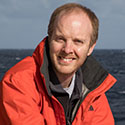
John Jamieson
Co-Principal Investigator, Associate Professor and Canada Research Chair in Marine Geology in the Department of Earth Sciences, Memorial University of Newfoundland
John Jamieson is an associate professor and Canada Research Chair in Marine Geology in the Department of Earth Sciences, Memorial University of Newfoundland, Canada. His research focuses on submarine hydrothermal systems, radioisotope geochronology, marine mineral resources, and seafloor exploration. He has participated on 17 research cruises to investigate hydrothermal systems hosted in diverse tectonic settings ranging from fast to ultraslow spreading ridges, volcanic arcs, and backarc basins.
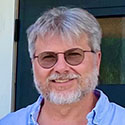
Paul Octavius Knorr
Critical Minerals Geologist, Bureau of Ocean Energy Management’s Marine Minerals Division
Paul Knorr is a Critical Minerals Geologist with the Bureau of Ocean Energy Management’s Marine Minerals Division (BOEM MMD). He is interested in exploring and characterizing critical marine minerals (e.g., cobalt, nickel, and lithium) and the deep-sea environments where they are found (e.g., polymetallic nodules, ferromanganese crusts, hydrothermal deposits). Paul is focused on identifying the types of information needed to understand, describe, and categorize these environmental resources and then developing novel processes and techniques to simultaneously gather the necessary geological and environmental data. Before joining BOEM, he conducted ocean acidification research with the U.S. Geological Survey, remediated contaminated groundwater in the private sector, and served as an Army engineer officer and airborne infantryman.
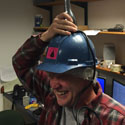
Mike McCarthy
Mechanical Technician, Sentry Group, Woods Hole Oceanographic Institution
Since starting at Woods Hole Oceanographic Institution in 2003, Mike McCarthy has worked with mooring operations and the Engineering and Field Support Group; run deck operations for the jumbo piston core, gravity core and multicore; been a member of the human occupied vehicle Alvin group; and been part of Marine Imaging Technologies, a Cape Cod-based company that designs and builds custom subsea imaging systems. Mike has a master’s degree in management with a concentration in strategy and leadership, and certificates in project management and business process design. He currently oversees the electronic refurbishment of components used in OOI CGSN moorings and is managing the development of an autonomous surface vehicle. Mike and his wife have three daughters: eight-year-old twins and a five-year-old.
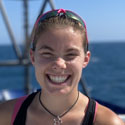
Laura Moore
Doctoral Student, University of Washington School of Oceanography
Laura Moore is a fourth year Ph.D. student at the University of Washington School of Oceanography. She works with Drs. Randie Bundy and Joe Resing to investigate the impact of organic ligand composition on the stabilization and transport of dissolved iron. Thus far, she has focused her work on benthic iron sources, such as hydrothermal plumes and a margin-associated oxygen deficient zone. As part of the science party for this expedition, she will work with Dr. Colleen Hoffman to characterize organic iron-binding ligands in hydrothermal plumes along Escanaba Trough. Outside of science, Laura enjoys running, kayaking, and cross-country skiing.
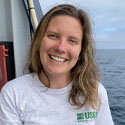
Kira Mizell
Research Oceanographer, U.S. Geological Survey Pacific Coastal and Marine Science Center
Kira Mizell is a research oceanographer for the Global Ocean Mineral Resources project at the U.S. Geological Survey (USGS) Pacific Coastal and Marine Science Center. She started working at the USGS on marine minerals research in 2011 and received her Ph.D. in 2019 from the University of California, Santa Cruz while continuing her USGS work. She has attended and participated from shore in research expeditions in both the Atlantic and the Pacific ocean basins. She studies minerals that form in the deep ocean, focusing on ferromanganese crusts, manganese nodules, and phosphorites. These deep ocean minerals scavenge elements from seawater or sediment pore water during their slow precipitation. Their chemical composition reveals information about ocean chemistry from the past and some elements accumulate to concentrations high enough to cause these minerals to be considered as a potential mineral resource. She also works with collaborators to investigate the relationship of marine minerals to co-located biological communities.
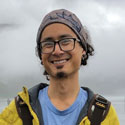
Peter Pearsall
Communications Specialist, U.S. Geological Survey Pacific Coastal and Marine Science Center
Peter Pearsall is a science communications specialist with the U.S. Geological Survey Pacific Coastal and Marine Science Center in Santa Cruz, California. He is also a photographer, videographer, and all-around naturalist, originally from Seattle, Washington. His background is in environmental journalism, and he has worked in a communications/public affairs/interpretation capacity for federal land management agencies as well as conservation nonprofits in Washington, Oregon, California, Nevada, Arizona, and Alaska.
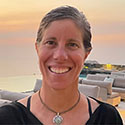
Nancy Prouty
Co-Principal Investigator, Oceanographer, U.S. Geological Survey Pacific Coastal and Marine Science Center
Nancy Prouty is an oceanographer at the U.S. Geological Survey (USGS) Pacific Coastal and Marine Science Center in Santa Cruz, California. She received her Ph.D. at Stanford University in the Oceans Programs in 2004 after earning an M.S. at the University of New Hampshire. Her scientific background includes atmospheric chemistry, oceanography, and climate change. Using geochemical signals preserved in “natural recorders” (e.g., ice cores and coral records) of climate variability, Nancy has focused her research on enhancing our understanding of climate variability on human-relevant timescales and impact of human activities on the climate. Her training includes a postdoctoral position at the Cooperative Institute for Climate and Ocean Research, a NOAA Cooperative Institute at the Woods Hole Oceanographic Institution. She joined the USGS in 2006 as a Mendenhall Fellow as part of the Ridge-to-Reef studies in Hawaii. She is now working as a research oceanographer as part of the Coral Reef Project, and is a member of the Diversity, Systematics, and Connectivity of Vulnerable Reef Ecosystems (DISCOVRE) team. Nancy’s geochemical analytical research at the USGS has focused on the effects of understanding both present and past effects of climate changes on coral reef ecosystems, both shallow water and deep-cold water coral ecosystems and chemosynthetic communities.
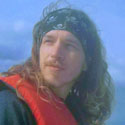
Johannes Scheffler
Johannes received his B.Sc. in chemistry from Leipzig University in 2017. He enrolled there for dual M.Sc. studies in chemistry as well as mineralogy and materials science, finishing the latter in 2020. During his studies, he joined Eoghan Reeves at the University of Bergen as an Erasmus+ exchange student in 2018, extending work with him into 2019 as an Erasmus+ trainee. In the following summer, Johannes joined a research cruise to the Norwegian Sea to help sample deep-sea hydrothermal vents over the course of two weeks.
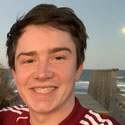
Jake Tidwell
Graduate Student, University of California, Santa Cruz
Jake Tidwell is a master's student in the Earth and Planetary Sciences program at the University of California, Santa Cruz, while simultaneously conducting research at the U.S. Geological Survey. He graduated from William & Mary in 2020 with a bachelor of science, where he double-majored in geology and government. His interests include economic geology, geochemistry, and oceanography. His passion for marine minerals began when he first learned about hydrothermal vents in high school. After completing his M.S., he will continue to pursue exciting opportunities in scientific exploration.

Karen Andrea Weitemeyer
Marine Geophysicist, Ocean Floor Geophysics, Inc.
Dr. Karen Andrea Weitemeyer has been a marine geophysicist at Ocean Floor Geophysics, Inc. since 2017. She earned her B.Sc (Hon) from the University of British Columbia in geophysics, and a Ph.D. from the Scripps Institution of Oceanography with a focus on marine electromagnetic methods applied to mapping marine gas hydrate deposits. She will be joining the Escanaba Trough research team as a scientific crew member to assist in the collection and analysis of autonomous underwater vehicle survey data with the aim of detecting seafloor massive sulfide deposits and hydrothermal circulation.
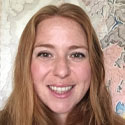
Isobel Yeo
Co-Principal Investigator, Volcanologist, National Oceanography Centre Southampton
Dr. Isobel Yeo is a volcanologist within the Marine Geosystems group at the National Oceanography Centre Southampton, United Kingdom. She is primarily interested in the interaction of volcanic systems with the ocean and her research spans volcanic and magmatic processes, hydrothermal circulation, marine geohazards, pollutants, resources, and energy generation. She works internationally with cutting-edge technologies, including remotely controlled and autonomous platforms, to characterize the mantle to surface processes that build our planet. On this project she will be responsible for designing autonomous underwater vehicle mapping campaigns and leading remotely operated vehicle work to map and sample active and inactive hydrothermal and volcanic areas. Following the expedition, she will attempt to reconstruct the volcanic history of the mapped regions in order to better understand how the volcanics interact with and drive subsurface fluid flow.